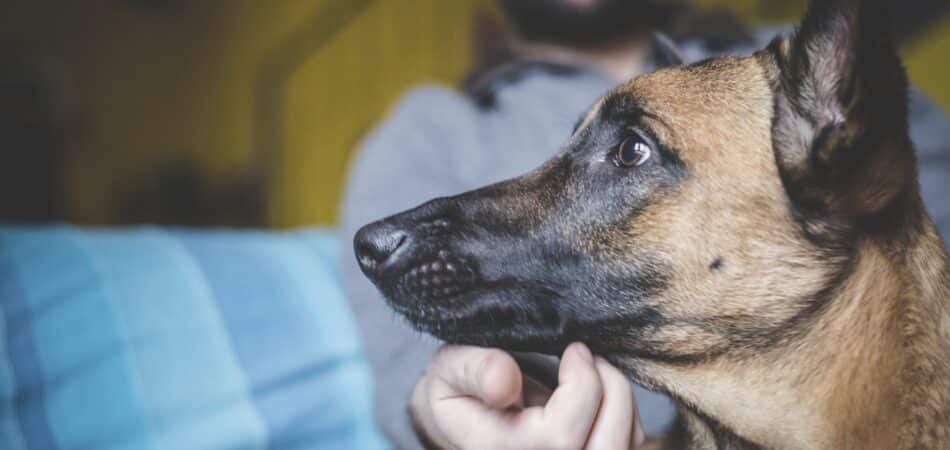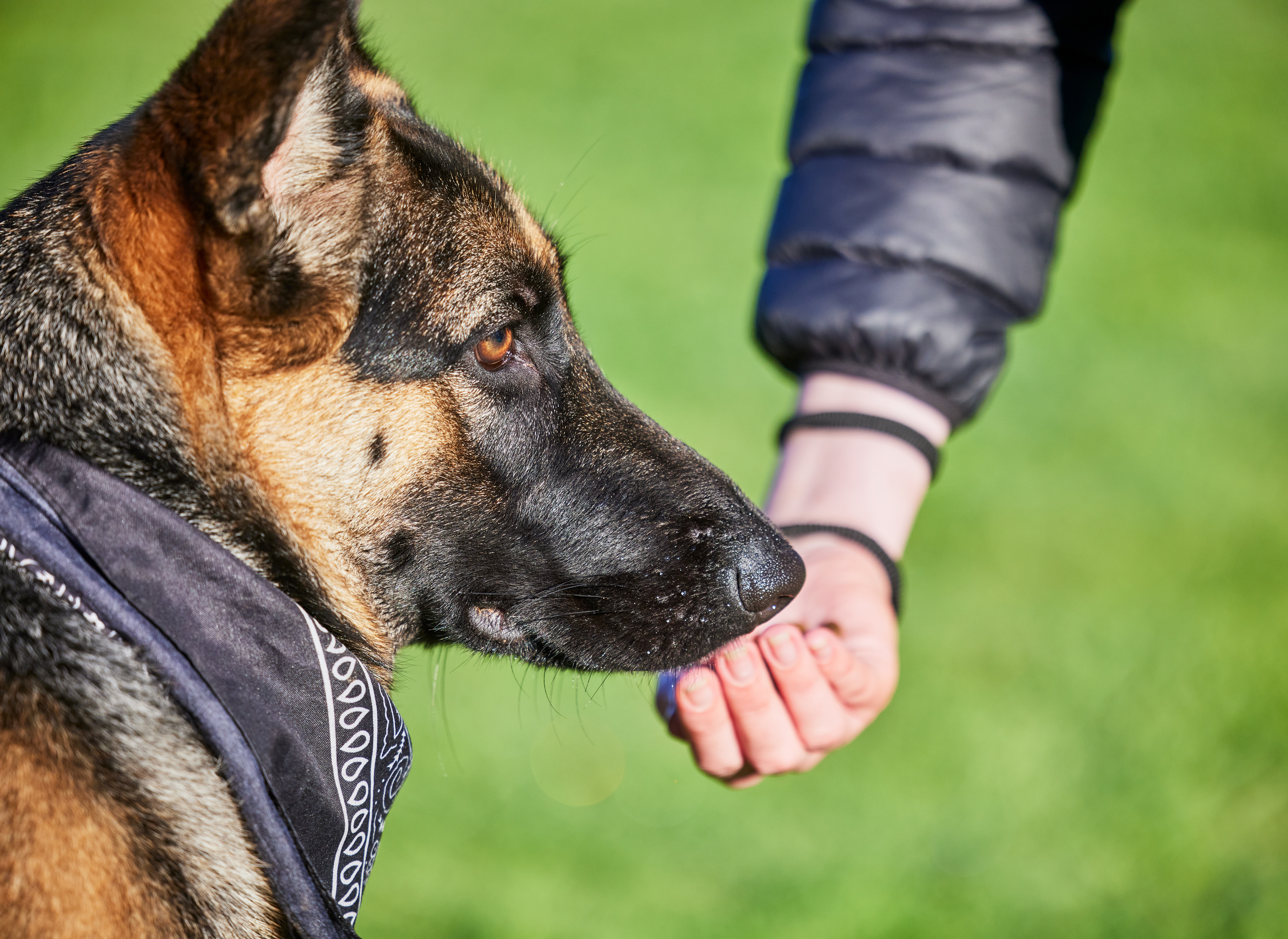






When people think about protection dogs, they often imagine a powerful, loyal companion ready to defend their home and family at a moment’s notice. While this is partially true, the reality is far more complex.
Protection dogs are not just pets; they are working animals bred for specific tasks that demand a unique psychological profile. Understanding the mental and emotional makeup of these dogs is important for anyone considering bringing one into their home.
Before diving into the psychology of protection dogs, it’s essential to discuss the significance of breed and purpose. For thousands of years, dogs have been bred for specific roles: protection, hunting, herding, and companionship.
This selective breeding has resulted in distinct behavioral traits tailored to their intended purposes.
For instance, a German Shepherd bred from working lines is vastly different from one bred for show. Working lines are selected for traits like high prey drive, strong defensive instincts, and intense focus—qualities that make them excellent at their jobs but challenging as pets.
Protection dogs, such as German Shepherds, Malinois, and Rottweilers, are bred to be vigilant, assertive, and ready to engage in combat if necessary.
These traits are deeply ingrained in their genetics and influence their behavior from a young age.
 A common misconception is that the environment can override genetics in shaping a dog’s temperament. While proper training and socialization are vital, they cannot completely alter a dog’s inherent traits. Protection dogs are bred to be aggressive when necessary.
A common misconception is that the environment can override genetics in shaping a dog’s temperament. While proper training and socialization are vital, they cannot completely alter a dog’s inherent traits. Protection dogs are bred to be aggressive when necessary.
This aggression is not random or uncontrolled; it is a targeted response to perceived threats. However, this drive can manifest in ways that are difficult for the average dog owner to manage.
For example, a young Rottweiler might be a playful and friendly puppy, but as it matures, its guarding instincts become more pronounced. This can lead to behaviors like food guarding, territorial aggression, and even challenges to the owner’s authority.
These are not signs of a “bad” dog; they are expressions of the dog’s genetic makeup.
Understanding and managing these traits requires a deep knowledge of dog behavior and a commitment to ongoing training.
Developing an effective protection dog requires striking a balance between aggression and obedience – harnessing the dog’s natural protective instincts while maintaining ironclad control. At the core of this psychological profile is a deep sense of confidence and assertiveness.
A protection dog must exhibit a bold, self-assured demeanor, unintimidated by perceived threats. This staunch self-assurance stems from a combination of careful breeding and extensive training, reinforcing the dog’s innate belief in its capability to confront and overcome dangers.
“Confidence is absolutely essential in a protection dog,” explains veteran trainer Vit Singh. “If the dog displays any hint of timidity or uncertainty, it can be exploited by would-be attackers. They have to project an aura of total dominance and control.”
Equally important is the protection dog’s heightened sense of environmental awareness and alertness. These canine bodyguards must be constantly vigilant, their eyes and ears attuned to the slightest anomaly that could signal an emerging threat.
Whether it’s the furtive glance of a potential assailant or the subtle shift in their principal’s body language, the most effective protection dogs possess an almost supernatural ability to anticipate danger before it materializes.
“It’s not enough for a protection dog to simply react to a threat,” says Vit.
“The true masters are the ones who can identify and defuse a dangerous situation before it ever escalates to that point. Their heightened senses and intuitive reading of human behavior gives them that crucial early warning system.”
Underpinning this environmental awareness is a carefully cultivated dose of healthy impulsivity – the willingness to act decisively in the face of a credible threat.
While impulsivity can be a challenge to manage in a typical household pet, it is an invaluable asset in a protection dog, allowing them to respond with explosive speed and force when necessary.
“You want a protection dog that is willing to take action, not one that hesitates or second-guesses itself,” explains Vit.
“But of course, that impulsivity has to be balanced against obedience and restraint. The dog has to know when to hold back, when to escalate, and when to disengage completely. That’s the real art of protection dog training.”
Which brings us to perhaps the most crucial psychological trait of all: steadfast loyalty.
A protection dog’s dedication to its handler must be absolute, a bond forged through extensive socialization, obedience training, and the dog’s own innate pack mentality. These canine protectors do not simply view their principal as an owner, but as a member of their own “family” that must be safeguarded at all costs.
“The loyalty of a protection dog goes beyond mere affection – it’s a deep, primal drive to defend their pack leader,” says Vit.
“That’s why we place such a heavy emphasis on bonding the dog with its handler from a young age. That connection has to be unbreakable because when push comes to shove, that’s what’s going to make the dog willing to put its own life on the line.”
Of course, cultivating this complex psychological profile is no easy feat. It requires painstaking, systematic training from the earliest stages of a protection dog’s development, honing each of these critical traits in a carefully controlled environment.
Obedience drills, socialization exercises, and carefully escalating aggression challenges all play a role in creating the ideal protection dog.
“It’s a balancing act,” Vit explains. “You have to push the dog to its limits, testing the boundaries of its confidence, alertness, and willingness to act. But you also have to maintain ironclad control, ensuring that aggression is channeled only toward legitimate threats, never innocent bystanders.”

Prey drive is the instinct to chase and capture, while defensive drive is the instinct to protect oneself or one’s territory. These drives are what make protection dogs effective in their roles, but they also make them challenging to live within a domestic setting.
For instance, a Malinois, a breed known for its intense drive and sensitivity, might exhibit behaviors like biting out of frustration if not allowed to channel its energy appropriately. This is not a sign of aggression towards the owner but rather a manifestation of the dog’s need to fulfill its instinctual drives.
If these drives are not properly managed through appropriate training and outlets, they can lead to problematic behaviors.
Owning a protection dog is not for the faint of heart. These dogs require constant mental and physical stimulation, as well as firm, consistent leadership.
They are not the type of dog that can be left alone for long periods or expected to be docile in a busy household.
The very traits that make them excellent protection dogs—vigilance, aggression, and a strong bond with their handler—can also make them difficult to manage. Many people are drawn to the idea of owning a protection dog because of their perceived toughness or the security they can provide.
However, these motivations often lead to poor decisions. A protection dog that is not properly trained and handled can become a liability, potentially leading to dangerous situations for the owner and others.
This is why it is crucial to have realistic expectations and a thorough understanding of what it takes to own and manage such a dog.
Given the complexities involved in raising and training a protection dog, professional guidance is essential. A knowledgeable trainer who understands the breed and its specific needs can make a significant difference in the dog’s development.
This training is not just about teaching the dog commands; it is about managing the dog’s drives and ensuring that its natural instincts are channeled in a positive direction.
Moreover, selecting the right dog in the first place is crucial. Potential owners should seek the advice of experts who can help them choose a dog with the right temperament for their needs.
And where to get expert guidance? Well…..Vanguard Protection Dogs. This is a reputable organization that specializes in providing professional guidance and training for protection dogs.
With a team of experienced trainers and a focus on ethical and humane practices, Vanguard Protection Dogs can help you get a protection dog with the right psychological profile.
So, secure your protection dog FREE consultation today or contact us now!